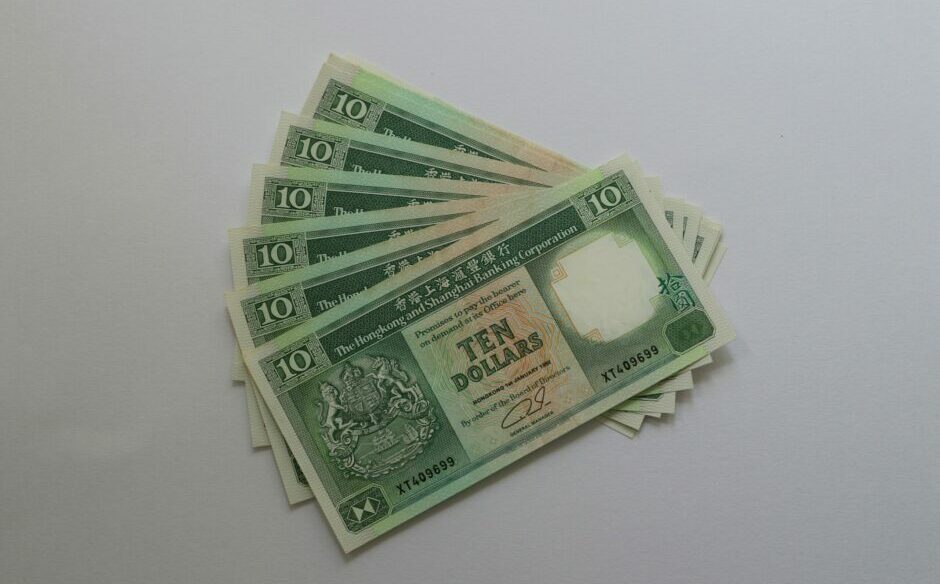TOKYO — Japan’s ties with Myanmar, long shadowed by memories of World War II, are today shaped by businesspeople like Shinsuke Goto, who now faces the decision of whether to stay in the Southeast Asian country after a decade of helping business put down roots.
The Harvard Business School graduate and former investment banker at Daiwa Securities started an independent consultancy, Trust Venture Partners, in Yangon in 2016. Trust Venture finds local partners for foreign companies and opportunities for investment in a country once touted as “Asia’s last frontier.”
But today, he focuses more on helping foreign companies sell off assets, dissolve joint ventures or leave the country altogether as the economic and political crisis sparked by the Feb. 1 coup deepens.
“I still believe in Myanmar’s potential,” Goto said in a telephone interview. “It’s hard to find a country like Myanmar — a large market size, friendly people, an easy place for Japanese to settle in.”
“It’s not hard to imagine that more and more companies will decide to leave,” Goto said. “This is not about politics or ideology. It is about whether your business will remain viable or not.”
Myanmar has received $2.7 billion in Japanese investment, according to data from the country’s Directorate of Investment and Company Administration. The sum includes about $700 million tied to the Thilawa Special Economic Zone, a 2,400-hectare industrial estate right next to Yangon. The development has been led by the Japan International Cooperation Agency, trading houses Mitsubishi, Sumitomo and Marubeni as well as the government of Myanmar.
Kyaw Moe Tun, Myanmar’s ambassador to the United Nations and an outspoken critic of the junta, has urged Tokyo to immediately suspend investment in the country until an elected government is restored. Toshimitsu Motegi, Japan’s foreign minister, replied that he will “carefully consider what kind of responses would be effective.” He added that Japan will monitor the situation and what steps other countries take.
Tokyo-based Mekong Watch and other NGOs have grown frustrated with Japan’s noncommittal attitude. Mekong Watch is urging Tokyo to stop all development aid immediately.
The Japanese push into Myanmar was spearheaded by Tokyo in a classic “Japan Inc.” combination of government and private-sector efforts. When then-Prime Minister Shinzo Abe visited Myanmar in 2013, he brought executives from about 40 companies and organizations. Such in-person boosterism for Japanese industry was a big part of his signature Abenomics campaign to rev up economic growth.
Myanmar was identified as a key target of “Thailand plus one” — Japan’s strategy to extend supply chains developed in Thailand to seek new low-cost production sites in other Southeast Asian nations. Myanmar is generally friendly toward Tokyo despite the Japanese invasion during World War II, which made the country the scene of some of the war’s bloodiest fighting.
Today, Myanmar’s population of 54 million and location at the crossroads of South and Southeast Asia helps put it on the map for foreign investors. The nation’s inexpensive labor makes it a promising alternative production base to Thailand. Japan also wanted to wean Myanmar off dependence on China, a geostrategic rival.
Yet Myanmar has been a difficult market for business. Its per capita income of $1,407 was the lowest in Southeast Asia in 2019, according to the World Bank. Foreign direct investment has waxed and waned, with a sharp increase between 2012 and 2015 followed by a deceleration from 2016 to 2018.
As the junta escalates its crackdown on anti-coup protesters, the U.S. and European Union might “ban any dealings with the Myanmar government,” not just those with companies controlled by the military, said Fumiharu Mieno, a Kyoto University professor and expert on development finance.
Myanmar’s investment directory ranks Japan as the eighth largest foreign investor in the country, following countries including Singapore, China and Thailand.
But Japan’s true investment is much larger, likely falling within the top three. Many Japanese investments come via subsidiaries in Singapore and are counted under that country’s total. These include a 10-year, $2 billion project by a joint venture between Japanese telecom carrier KDDI and trading house Sumitomo to develop a mobile network with the government-owned MPT, Myanmar’s largest mobile carrier.
KDDI has been active in emerging markets including Myanmar, Mongolia and Bangladesh. Many Japanese projects, such as KDDI’s mobile phone network and the Thilawa SEZ, could be targeted by sanctions — or by popular protests, Mieno said.
Japanese banks are especially wary of getting caught in Western sanctions. MUFG, the largest Japanese bank, was slapped with $315 million in fines by New York state regulators over sanctions violations in 2014. It was “a very painful experience” even for a bank that earns billions of dollars a year, said Takahiko Watanabe, professor of commerce at Senshu University and former MUFG banker.
“If Japanese businesses have to choose between the military and the citizens, they will choose the latter without a doubt,” he said, citing increased sensitivity by Japanese companies to investor calls for corporate social responsibility. “Withdrawing investment could hurt the local economy in the short term, but it will benefit in the long term if it leads to a change in behavior.”
As of March 2019, there were 3,168 Japanese citizens living in Myanmar — fewer than the 79,123 in Thailand, but relatively large for a market of Myanmar’s size.
The coronavirus pandemic likely cut the number by half last year, as many businesspeople including Goto sent their families back home. Then came the February coup. Now, the Japanese community is estimated at less than 1,000, according to Goto.
For years, Goto had warned clients about the possibility of a coup. But he did not expect the complete shutdown of the economy as Myanmar faces now. He had anticipated a situation similar to that in Thailand, where a series of coups has left the economy largely on its own.
Other Japanese investors include Toyota Motor, which has devoted $52.6 million to build a plant in the Thilawa zone for assembling Hilux pickup trucks starting this year, and Suzuki Motor, which announced in March 2000 a $110 million investment to quadruple local auto output to 40,000. Suzuki is the largest carmaker in Myanmar, with a market share of 60%.
The outlook has worsened sharply for the auto industry, which only a year ago was thought to be a key growth driver for Myanmar’s consumer spending.
The civil disobedience movement (CDM) has paralyzed much of the economy since the coup. The World Bank now predicts Myanmar’s economy will shrink 10% this year.
“Demand for auto loans is likely to fall sharply,” Goto said. Fitch Solutions predicts a 20% contraction in Myanmar’s economy for the fiscal year ending September.
Toyota has delayed the opening of its plant, originally scheduled for February. Suzuki’s plants — one in the Thilawa zone and another in Yangon — are suspending work.
Goto has been involved with Myanmar since 2012, when Daiwa helped the country launch its first stock exchange. As a Daiwa representative in Myanmar, he helped find companies for listing. Daiwa developed a trading, clearance and settlement system for the exchange, which also received support from Japan Exchange Group — the operator of the Tokyo Stock Exchange — and the Japanese Financial Services Agency in crafting securities laws and listing rules. The local partner of the project is Myanma Economic Bank, a government-owned company. The Yangon Stock Exchange opened in 2015.
Japan also was involved in developing a payment clearing system for Myanmar’s central bank, a task that fell on the shoulders of NTT Data as part of an official development assistance program.
The Japanese government provided 178.9 billion yen ($1.63 billion at current rates) in grant aid and 167.3 billion yen in development loans to Myanmar from 2011 to 2019, according to Japanese data, in addition to around $3 billion in debt forgiveness.
Last month, Japan decided against proceeding with new aid programs, though it will continue with projects already approved. Mieno said Tokyo appears to be “taking a wait-and-see stance” on how the coup will play out.
Japan contributes to building an institutional investor base in the country as well. In 2019, Nippon Life and Taiyo Life set up joint ventures in Myanmar, as did Japanese nonlife insurers Tokio Marine, Sompo Japan and Mitsui Sumitomo. Also that year, Dai-ichi Life Insurance became one of the five foreign life insurers that received a license to provide services in Myanmar.
Japanese banks have supported Japanese businesses entering Myanmar, such as by settlement of imports and exports and connecting with local retail banks for daily transactions. In Myanmar, only 26% of adults own bank accounts, one of the lowest rates in Southeast Asia, according to World Bank data.
“We are the first to enter and the last to leave a country,” said one megabank official, stressing the commitment to the market.
MUFG said it is committed to Myanmar as long as the bank has clients there.
In 2014, Japan’s three largest banks — MUFG, Sumitomo Mitsui Banking Corp. and Mizuho — were among the nine foreign operators granted a banking license. They now have a branch in Yangon to provide trade settlement support for Japanese and Western companies operating in Myanmar. Retail transactions are left to local partners — CB Bank for MUFG, KBZ Bank for Sumitomo Mitsui and Aya Bank for Mizuho.
Japanese banks have conducted an expansion drive in Southeast Asia over the past decade amid slow economic growth and zero interest rates in the home market.
But the Myanmar junta and Thailand’s 2014 coup have been blunt reminders of heavy risks associated with emerging market investments.
“Financial institutions shouldn’t bet on one market. They need to spread out their investment,” said Watanabe, the Senshu University professor. “Businesses could suffer serious damage if they bet on one market and that market goes off track.”
MUFG seems to follow such a strategy. Its 2013 takeover of Bank of Ayudhya, the fifth largest bank in Thailand, came after acquiring a 20% stake in Vietnam’s VietinBank earlier that year, and was followed by deals for a 20% stake in the Philippines’ Security Bank and 94% of Bank Danamon of Indonesia in 2019.
These Southeast Asian banks are not the largest in their countries, but MUFG uses them as local platforms for expansion through digital channels. MUFG partnered with Singaporean tech group Grab last year, allowing its Southeast Asian partner banks to offer services such as loans and credit cards to the app’s users, including cabdrivers and food deliverers. MUFG was considering a similar push into Myanmar, Watanabe said.
Other Japanese banks followed MUFG into Southeast Asia. Sumitomo Mitsui, Japan’s second-largest bank, acquired 15% of Eximbank in Vietnam in 2008, 18% of Acleda Bank in Cambodia in 2015 and 97% of BTPN in Indonesia in 2019.
Japanese banks had a bitter experience in the late 1990s. They gave up most of the business with local Southeast Asian companies in the aftermath of Japan’s banking crisis in an effort to reduce their risk assets. When they tried to return to the market after dealing with their bad loans in the early 2000s, they found it difficult to reenter, Watanabe said.
Historically, one key function of Japanese banks was to provide financing for Japanese companies as they built production bases in Southeast Asia, said Hiroshi Akabane, professor at Asia University in Tokyo and expert on international finance.
“Japanese exporters started setting up overseas subsidiaries and used them as an export base following the loss of competitiveness of the home market due to the yen’s rise in the 1970s and ’80s,” he said.
For now, the outlook for Myanmar is dim, potentially for many years.
“It would be a lie if I said I don’t regret betting my career on Myanmar,” said Goto, the consultant. “I thought that my business would have good prospects, once it built a solid position. The experience I’ve had in Myanmar will be useful for whatever I do next. Still, I cannot avoid feeling very disappointed.”












